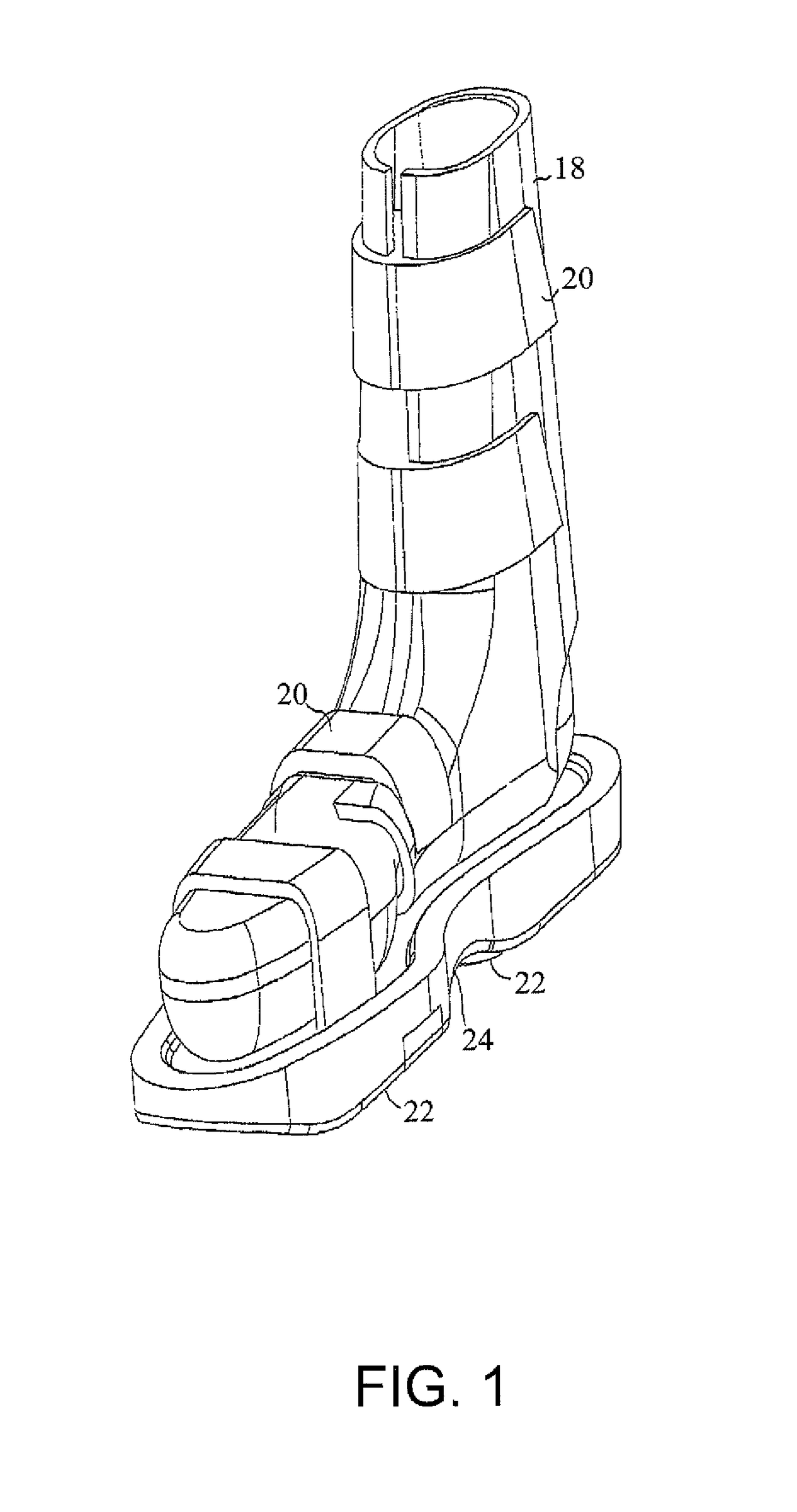Device and methods of treating neurological disorders
a neurological disorder and device technology, applied in the field of neurological disorders, can solve the problems of increasing intracranial pressure, affecting the gait parameters of affecting the functioning of subjects afflicted with such conditions, so as to improve the sensory, motor and/or movement parameters of subjects, improve the gait parameters of subjects, and improve the effect of neurological control and/or neurological function
- Summary
- Abstract
- Description
- Claims
- Application Information
AI Technical Summary
Benefits of technology
Problems solved by technology
Method used
Image
Examples
example 1
Treatment of a Subject (Patient) Having a Parkinson's Disease with Lt Hip and Bilateral Knee Pain
[0145]A 47 years old male patient having Parkinson's disease was presented to the treatment center with a main complaint of slowness in gait and chorea.
[0146]Case History: Patient complains of suffering from a gradually deteriorating gait as well as feeling unstable and insecure during ambulation. He has been diagnosed with Parkinson's disease 11 years prior to his initial consultation and started treatment with L-dopa. A few months following the commencement of medications choreatic movements appeared which were unresponsive to any changes in dosage. In addition, he reported he developed pain in the left hip (VAS 6 / 10) which increases during walking and standing. He also had pain in both knees (VAS 5 / 10) in walking as well as going up or down stairs. This pain, which increased in weight bearing activities, further, limited his function.
[0147]Physical Examination: On observation, the pat...
example 2
Treatment of a Subject (Patient) Having a Relapsing-Remitting Multiple Sclerosis (MS)
[0158]A 37 years old female patient was presented to the treatment center, has been diagnosed with relapsing-remitting multiple sclerosis (MS) at the age of 27.
[0159]Case History: In the ten years since her diagnosis the patient has suffered four attacks, all of which included visual deficits (which later improved) and weakness in both legs. She has been receiving immuno-globulin therapy every 6 weeks. She reported low back pain for many years, but that pain has intensified since her gait has deteriorated due to the MS.
[0160]Physical Examination: On observation, the patient was standing with bilateral knee recurvatum and hyper lordosis, probably due to weakness of muscles. She was able to maintain balance while standing on one leg for 20 seconds (in both legs). Assessment of ranges of motion at the ankles, knees, hips and low back did not reveal any limitations and did not produce pain. Manual muscl...
example 3
Treatment of a Subject (Patient) Having Spastic Diplegia
[0172]A 16 years old male patient presented to the treatment center, has been diagnosed with spastic diplegia due to cerebral palsy.
[0173]Case History: The patient was born prematurely on the 32nd week of an otherwise normal pregnancy, due to preeclampsia. He was diagnosed as suffering from cerebral palsy (spastic diplegia) at the age of 17 months. He arrived at the treatment center on a wheelchair since, as he reported, he fatigues very quickly when walking. Inside his home he reported he was able to walk independently for short distances. He reported that when he walked for more than 10 minutes he started to experience bilateral knee and low back pain. His treating orthopedic surgeon recommended a derotation osteotomy of the right femur, but declared that the patient must first improve his strength and level of function.
[0174]Physical Examination: On observation, the patient was obese and bears significantly more weight on hi...
PUM
 Login to View More
Login to View More Abstract
Description
Claims
Application Information
 Login to View More
Login to View More - R&D
- Intellectual Property
- Life Sciences
- Materials
- Tech Scout
- Unparalleled Data Quality
- Higher Quality Content
- 60% Fewer Hallucinations
Browse by: Latest US Patents, China's latest patents, Technical Efficacy Thesaurus, Application Domain, Technology Topic, Popular Technical Reports.
© 2025 PatSnap. All rights reserved.Legal|Privacy policy|Modern Slavery Act Transparency Statement|Sitemap|About US| Contact US: help@patsnap.com



